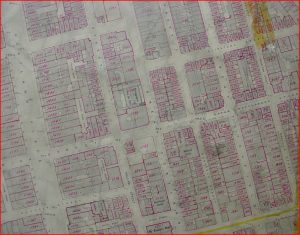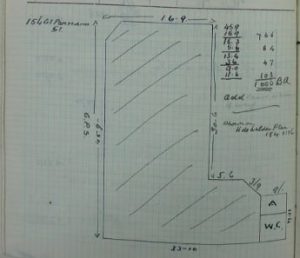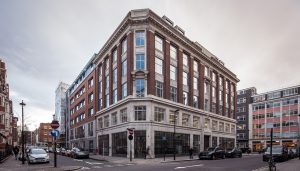In 1910 the British government decided to carry out a detailed survey and valuation of every building in the country. It was an enormous task and involved hundreds of surveyors up and down the land. The records of the survey can be inspected at the National Archives, which means that they are available to researchers, historians and anyone wishing to find out more about the places where their ancestors lived more than a century ago.
I used these records to find out more about the large business premises occupied by Charles Wells (the man who broke the bank) at 152-156 Great Portland Street, London.

Each building or plot of land was assigned a reference number, and these were marked on a large-scale map. It is necessary to consult these maps first in order to find the district and reference number, before locating the detailed survey of any individual property. (Crown copyright).

The individual entries contain written information about occupiers of buildings; value; rent paid and many other details of interest to historians. In some cases, such as this one, the surveyor has included a sketch plan of the building. Since it was possible to establish that the building was largely unchanged since Wells had occupied it twenty years earlier, in the 1890s, this helped me to put together an accurate written description of the business premises and living accommodation when he was based there. (Crown copyright)

The building in which Charles Wells had his offices and workshops had been converted into a car showroom by about 1912. It was subsequently demolished. Yalding house (pictured) was built on the site of Wells’ HQ and adjoining properties. For many years Yalding House was occupied by the BBC, and the studios of Radio 1 were there between 1996 and 2012. (McAleer & Rushe)
